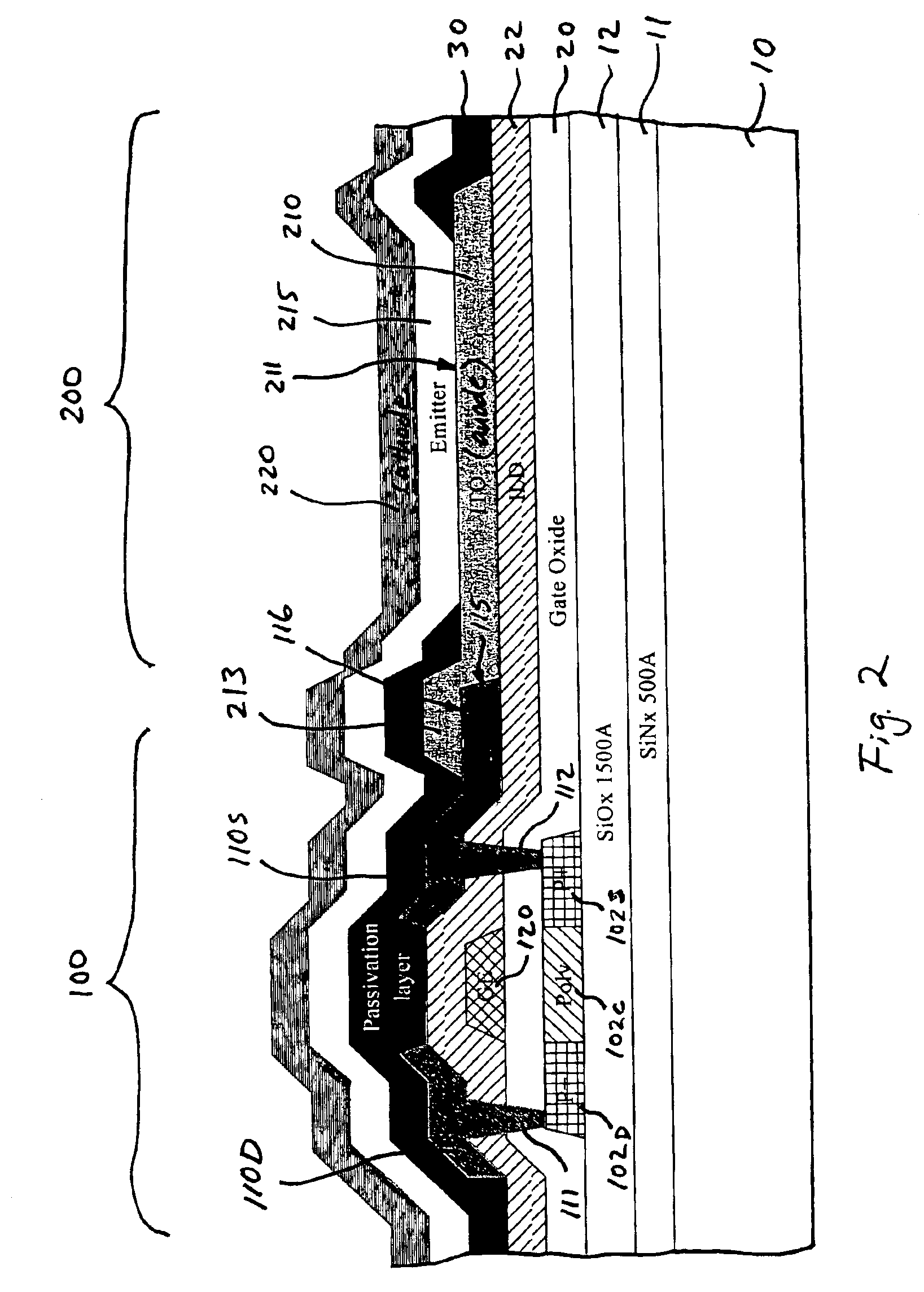Thin film transistor organic light emitting diode structure
a thin film transistor and organic light-emitting diode technology, applied in the direction of discharge tube luminescnet screens, identification means, instruments, etc., can solve the problems of difficult control of surface rough difficult to produce the desired flatness of the anode layer, etc., to achieve the effect of lowering the power demand of the el display device and reducing the contact resistance between the anode and the source electrod
- Summary
- Abstract
- Description
- Claims
- Application Information
AI Technical Summary
Benefits of technology
Problems solved by technology
Method used
Image
Examples
Embodiment Construction
_n">[0019]FIG. 3 is a schematic cross-sectional view of an improved EL display device according to another embodiment of the present invention; and
[0020]FIG. 4 is a schematic cross-sectional view of the contact region between a TFT's source electrode and an EL element's anode according to another embodiment of the present invention.
[0021]Same reference numerals are used to denote like parts throughout the various figures.
DETAILED DESCRIPTION
[0022]Referring to FIG. 2, an improved electroluminescence (EL) display device according to an embodiment of the present invention is disclosed. The EL display device comprises a thin-film-transistor (TFT) and an EL element 200 formed on a substrate 10. The EL element in this embodiment is an organic light emitting diode and the TFT is used to drive the EL element 200. The substrate 10 is transparent and may be formed of a non-conductive material, such as, glass, synthetic resin, or the like. It may also be formed of a conductive or semiconductor...
PUM
 Login to View More
Login to View More Abstract
Description
Claims
Application Information
 Login to View More
Login to View More - R&D
- Intellectual Property
- Life Sciences
- Materials
- Tech Scout
- Unparalleled Data Quality
- Higher Quality Content
- 60% Fewer Hallucinations
Browse by: Latest US Patents, China's latest patents, Technical Efficacy Thesaurus, Application Domain, Technology Topic, Popular Technical Reports.
© 2025 PatSnap. All rights reserved.Legal|Privacy policy|Modern Slavery Act Transparency Statement|Sitemap|About US| Contact US: help@patsnap.com



